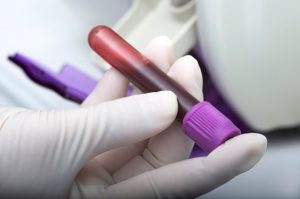 A non-invasive method to diagnose Alzheimer’s disease has shown promise in detecting the condition early on. The researchers developed a technology that can identify the pathological oligomeric forms of brain tau proteins in blood platelets of patients with Alzheimer’s disease and other neurodegenerative disorders. They uncovered that pathological forms of tau proteins correlate with decreased brain volume in areas of the brain that are known to be associated with the developments characteristic of Alzheimer’s. This finding takes us one step closer to using the so-called peripheral biomarkers for early diagnostic tests of Alzheimer’s disease.
A non-invasive method to diagnose Alzheimer’s disease has shown promise in detecting the condition early on. The researchers developed a technology that can identify the pathological oligomeric forms of brain tau proteins in blood platelets of patients with Alzheimer’s disease and other neurodegenerative disorders. They uncovered that pathological forms of tau proteins correlate with decreased brain volume in areas of the brain that are known to be associated with the developments characteristic of Alzheimer’s. This finding takes us one step closer to using the so-called peripheral biomarkers for early diagnostic tests of Alzheimer’s disease.
The study highlights the relationship between pathological and normal variants of tau associated with the reduction of brain volume in key structures affected by Alzheimer’s disease. Using a tau biomarker as a means of testing for Alzheimer’s disease could help detect the condition much earlier than current diagnostic tests do – even prior to the symptom onset.
This may come very handy for the development of more specific therapies as well as prevention tactics aimed at reducing the incidence rate of Alzheimer’s disease. Moreover, detecting tau proteins in blood platelets could help expand the understanding of the resulting neurodegeneration.
Advertisement
Related: Alzheimer’s disease stages and progression
